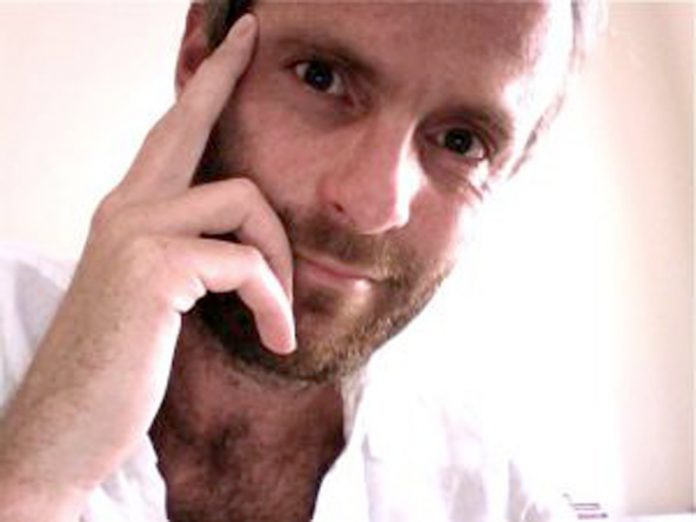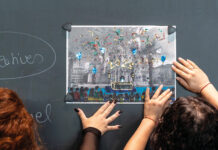
Creative concepts for a circular economy
– Rainer Rosegger
Continuous economic growth is leading to an exponential increase in the consumption of globally limited resources and raw materials. A system with an expiry date. How can economic models be developed that are systematically supported by the concept of a circular economy? How can production and the consumption be decoupled from each other? The cradle-to-cradle concept is one approach at the microeconomic level.
Against the background of the increase in environmental pollution and damage to health, as well as an escalating shortage of resources, the cradle-to-cradle design concept defines a new approach to production and consumption. Contrary to the efficiency improvement approach that currently dominates our system, in other words, the attempt to reduce harmful and problematic influences, the goal of cradle-to-cradle design is to create products and processes in such a way that factors with a negative impact are eliminated, and positive effects are created when products are used. The key factor here is the concept of the circular economy on the basis of innovative technologies. According to this model, the production methods, the use and the re-use of the products are designed in such a way that the quality of the raw materials remains over several life cycles. This means that in this system, there is no longer any waste. Everything becomes nourishment: the right materials are used in defined cycles (metabolisms) at the right point in time and at the right place.
In this respect, cradle-to-cradle design differs fundamentally from standard recycling. Right from the start, materials are selected and products are designed in order to enable the best possible cycle management. Michael Braungart, co-founder of this concept, refers in this context to the next industrial revolution. The opportunity arises here of creating environmentally intelligent products, of achieving economically positive effects through the re-use of raw materials at a time when prices are rising, and to redefine social responsibility in the production and consumption process. Here, nature is reflected as a model in the development of a cradle-to-cradle product. Blossom on trees in the spring is only a waste on the surface. Just a few blossoms lead to the production of new trees. All the blossoms which are not used for reproduction fall to the ground and become nutrients for other organisms.
With cradle-to-cradle design, products are managed in two different cycles. Consumer goods (natural fibres, cosmetic products, washing agents, etc.) are designed in such a way that they can be repeatedly used in the biological cycle. For this purpose, they are decomposed into biological nutrients and promote biological systems such as plant growth. The renewable raw materials and substances are then in turn the basis for new products. In the technical cycle, consumer goods (TVs, cars, synthetic fibres, etc.) are broken down into so-called “technical nutrients” after fulfilling their function, and enable the production of new consumer goods. Questions about consumption are redefined: the users/consumers only purchase the related service, such as television reception. The materials are retained in the technical cycle through redemption and cycling systems.
In this context, the creative industries and design take on a new significance. Through issues relating to aesthetics and functionality, design takes on the key role as an engine for taking change in a positive direction. Products must be designed in such a way that they can be managed in one of the two cycles in the best possible way, and materials must be chosen in the premise of their suitability for re-use. In the field of material science and research, too, there is great potential for innovation. Additionally, there is great potential for innovation when it comes to finding effective ways of newly defining product uses and services. Thus, for example, the mobility of the future is not based solely on reducing the hazardous emissions of systems that have been in use to date. A far more important questions is how we can best do justice to the mobility requirements of an increasingly flexible society, maximise the benefit to the individual and at the same time generate a positive influence on the environment and society. In the future, designers will function far more as consultants, supporting companies during processes of change and implementing systematic approaches in the different disciplines and across entire production and value chains.
Currently, prototypes are being developed for the traditional Vorarlberg-based company Wolford, which operates in the luxury textile segment. Here, 14 supplier operations have been integrated into the research consortium, which corresponds to around one-eighth of the entire Vorarlberg textile industry in terms of employees. This also demonstrates the necessity for cooperation beyond individual sectors. We can only design the future together. With the “Europe 2020” growth strategies, the European Commission and the European Council also gave a clear commitment to promoting the circular economy. Clear goals and implementation strategies were defined with the EU action plan for the circular economy drawn up in 2015. Alongside the positive impact on the environment, reference is made to the potential for new, sustainable growth and the promotion of innovation and research.
The cradle-to-cradle design approach makes it possible to create the paradigm change that is needed in our society, and to generate positive location development. Young people in particular are looking for new answers and ways of tackling the present extensive crises in our system. The sole orientation to increasing efficiency through linear approaches will come up against technical, social and environmental barriers. The “cradle-to-grave” mentality is a model that is becoming obsolete. To a far greater degree, we need new, effective approaches based on comprehensive systemic thinking. These new approaches must be integrated into our education system, and when educating designers, architects and engineers in particular, it is important that these new, innovative paths are taken and that we work together with the talent and knowledge of young people in order to change our society. In light of the challenges we face, we have little time left in order to make this change. But Austria in particular offers great potential for designing our future in a positive way.
The author
The sociologist Mag. Rainer Rosegger, born in 1975, has worked since 1998 in the fields of residential building construction, architecture, and urban and regional development with different points of access and approaches as a researcher and consultant with his company SCAN. In 2006, he founded the network agency “Pilotprojekt” together with engineer Georg Leitner and the designer Tammo Trantow. He also works as a lecturer at the Karl-Franzens University in Graz and at the TU
Graz. Since 2006, he has also been a member of the EST COST programme “Urban Knowledge Arena”.











